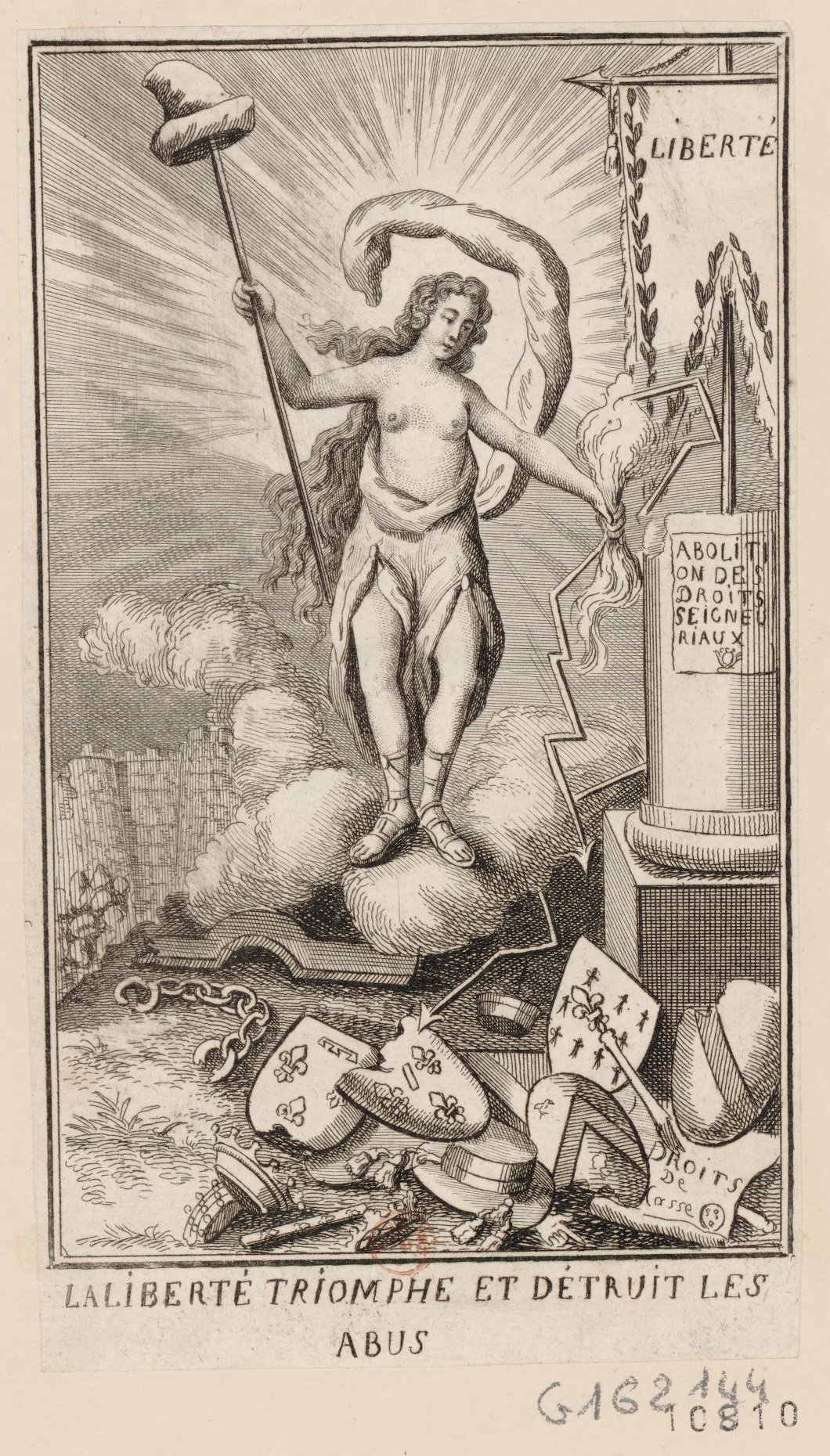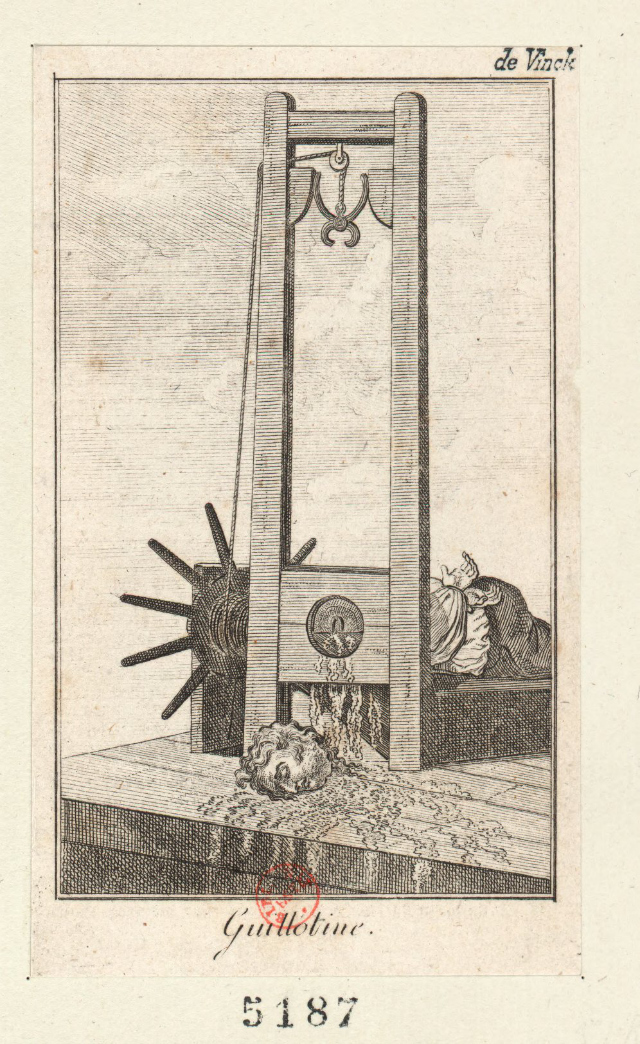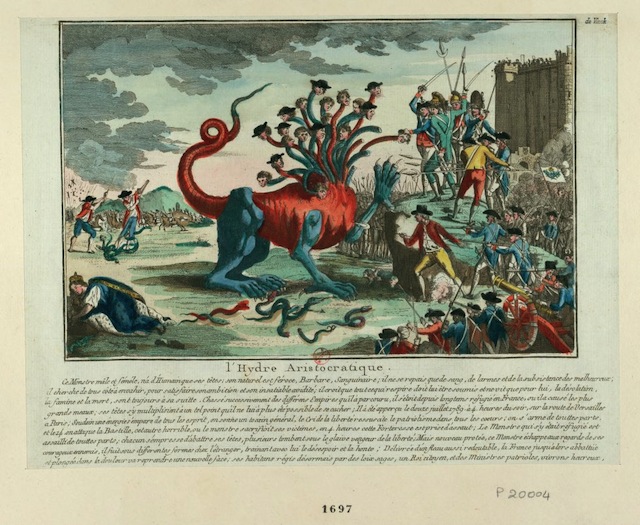 It’s often said that the French Revolution (1789–1799) created the “blueprint” for all revolutions to come. Unlike any event before it, the Revolution drew its strength from ideology — an ideology that turned on the belief that France had created a radical break with its monarchical past, and would now radically re-organize itself along egalitarian and democratic lines. To drive this message home, the revolutionaries produced thousands of pamphlets and political works of art. What’s more, they created a new revolutionary calendar and a series of revolutionary festivals that helped give cultural expression to the idea that France had entered a new political age.
It’s often said that the French Revolution (1789–1799) created the “blueprint” for all revolutions to come. Unlike any event before it, the Revolution drew its strength from ideology — an ideology that turned on the belief that France had created a radical break with its monarchical past, and would now radically re-organize itself along egalitarian and democratic lines. To drive this message home, the revolutionaries produced thousands of pamphlets and political works of art. What’s more, they created a new revolutionary calendar and a series of revolutionary festivals that helped give cultural expression to the idea that France had entered a new political age.
More than a century later, the Russian revolutionaries would use the French blueprint and all cultural tools at their disposal to promote its Marxist ideals. You’ve seen the posters. You’ve watched the films. Maybe you’ve read their texts. But perhaps you’re not as familiar with where revolutionary propaganda all began, in which case you’ll want to rummage through a new archive of 14,000 images from the French Revolution, created by Stanford University and the Bibliothèque nationale de France (BnF). The new archive contains visual materials that will intrigue scholars as much as history buffs.
Above you can see one image celebrating a founding document of the Revolution — 1789’s Les droits de l’homme et du citoyen (The Rights of Man and Citizen). Immediately below, you can see a depiction of Liberty (a modern version of a Greek goddess) triumphing over past political abuses. And, at the bottom, we have a vivid display of the Revolution’s choice instrument of capital punishment — the guillotine. Plus an image of an “aristocratic hydre” in combat with the people.
The images in the archive can be sorted by theme. If you find one you like, you can choose to download the image in a high-resolution format, ranging from small to extra large. Scholars of the French Revolution won’t want to miss another part of the newly-created archive. It contains the Archives parlementaires, a series of historical documents that record the political events of the Revolution. In the mid 1990s, I spent long stretches of time reading those documents in the great reading room of the old BN.
To explore more image archives, please see our recent post: Where to Find Free Art Images & Books from Great Museums & Libraries.
Note: Some lectures on the French Revolution can be found in Yale’s course European Civilization, 1648–1945, which appears in our collection, 1,700 Free Online Courses from Top Universities.
via Hyperallergic
Related Content:
Read 700 Free eBooks Made Available by the University of California Press
The Rijksmuseum Puts 125,000 Dutch Masterpieces Online, and Lets You Remix Its Art





“Understanding”, path to Freedom . Thanks your sharing .
Thanks for sharing!
I’d like to add that the French revolutionairies were inspired by the American revolution a few years prior. The French adopted — among other ideas — the concept of a constitution.
Thanks, i am one of the readers and followers of open culture.
It is very educative and motivational.
I want to enroll as one of your online students inorder to fufill my dreams of becoming a graduate of Bsc holder.
Thanks a lot waiting for your response.
Interested in the french revolution.
can I enroll as a student for free?
Imagenes hermosas y poco conocidas. Muchas gracias
Can anyone explain the guillotine which instead of a blade has a pincer.
What did this do and why was it used?
Buonaparte
cheering the murders? wow
Page not found when I click on the actual archive link…
Pincer held the blade, which in the drawing is at the bottom near the decapitated head. The blade was released when the pincer opened at the top of the machine.